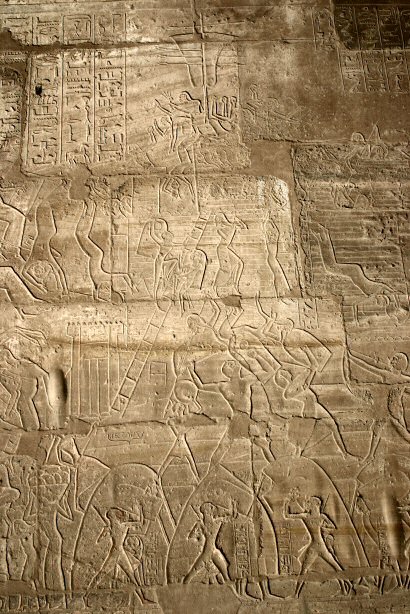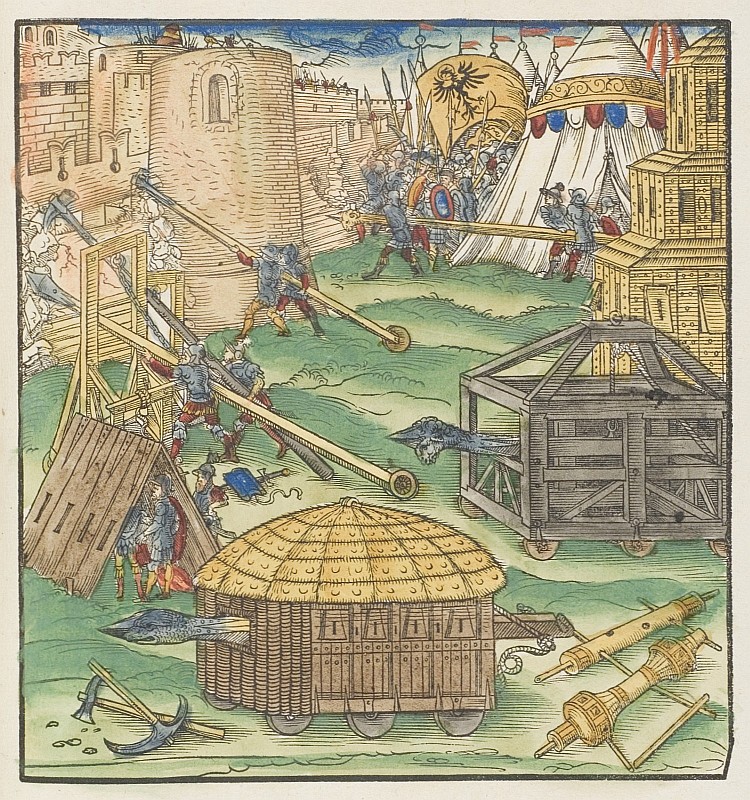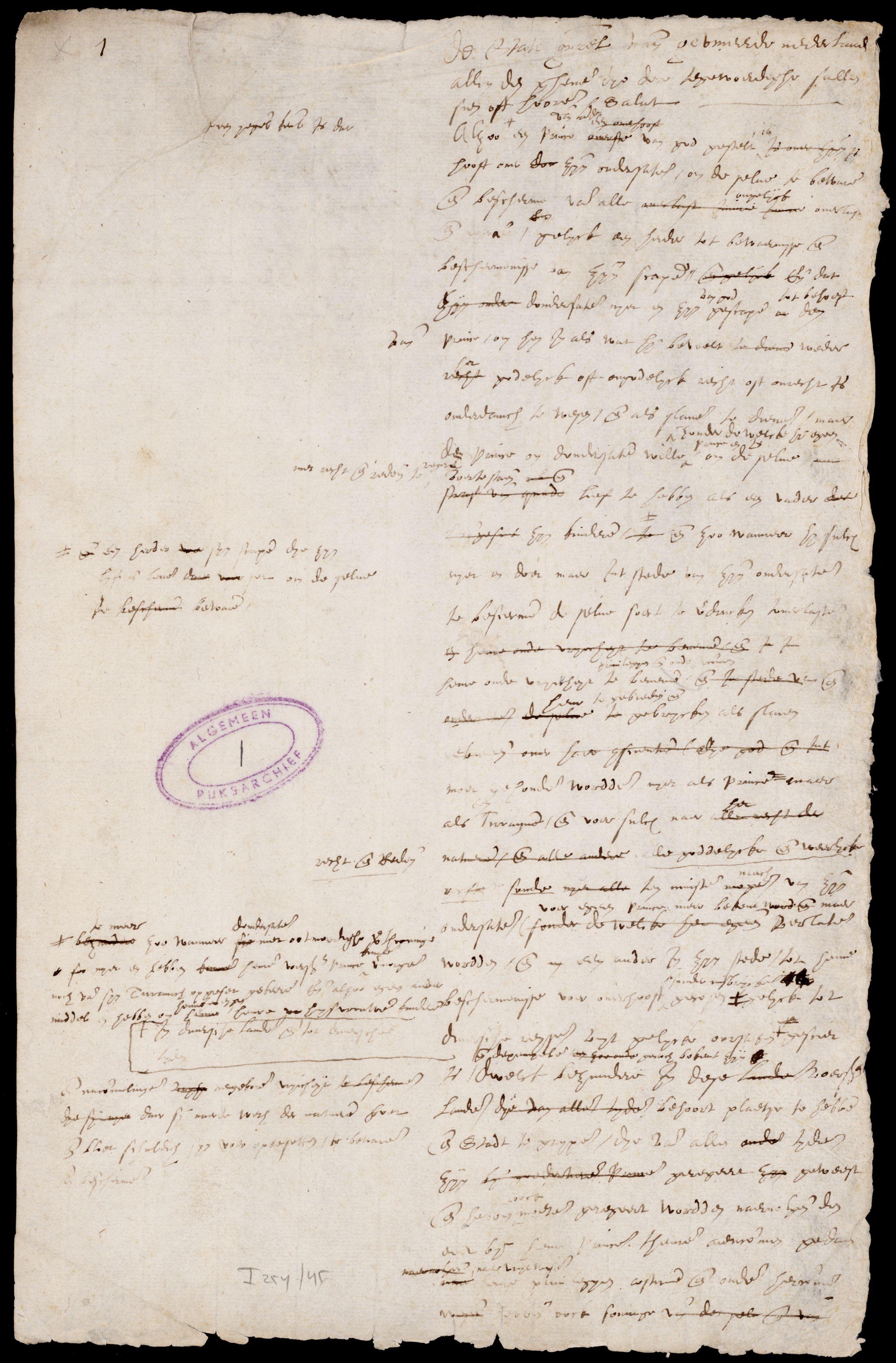|
Battle Of Kollum
The Battle of Kollum was a military engagement that took place on 16 July 1581 during the Eighty Years' War and the Anglo–Spanish War (1585), Anglo–Spanish War. The battle was fought between an English and Dutch force under John Norris (soldier), John Norreys and Diederik Sonoy respectively, and a Spanish force under George van Lalaing, George van Lalaing, the Count of Rennenberg. The Dutch and English were victorious, and as a result of the defeat Rennenberg, already ill, died two days later.Nolan p. 46 In March 1580 George van Lalaing, the Count Rennenberg had Turncoat, turned against William the Silent, and then declared for Spain. This caused outrage amongst the Dutch with many even coming over to the side of the rebels. Rennenberg led an army to lay Siege of Steenwijk (1580–1581), siege at Steenwijk but was defeated when an Anglo-Dutch relief army under John Norris (soldier), John Norreys arrived. Many of Rennenberg's army were sick and in a mutinous mood; they fled ... [...More Info...] [...Related Items...] OR: [Wikipedia] [Google] [Baidu] |
Eighty Years' War
The Eighty Years' War or Dutch Revolt ( nl, Nederlandse Opstand) ( c.1566/1568–1648) was an armed conflict in the Habsburg Netherlands between disparate groups of rebels and the Spanish government. The causes of the war included the Reformation, centralisation, taxation, and the rights and privileges of the nobility and cities. After the initial stages, Philip II of Spain, the sovereign of the Netherlands, deployed his armies and regained control over most of the rebel-held territories. However, widespread mutinies in the Spanish army caused a general uprising. Under the leadership of the exiled William the Silent, the Catholic- and Protestant-dominated provinces sought to establish religious peace while jointly opposing the king's regime with the Pacification of Ghent, but the general rebellion failed to sustain itself. Despite Governor of Spanish Netherlands and General for Spain, the Duke of Parma's steady military and diplomatic successes, the Union of Utrecht ... [...More Info...] [...Related Items...] OR: [Wikipedia] [Google] [Baidu] |
Battle Of Noordhorn
The Battle of Noordhorn, fought on 30 September 1581, was a pitched battle of the Dutch Revolt, fought between a Spanish army commanded by Colonel Francisco Verdugo – consisting of Walloon, German, Spanish, and Albanian soldiers – and a Dutch States rebel army under the Englishman John Norreys – comprising English, Scottish, Dutch, and Walloon troops – in the province of Groningen. In 1580, the Dutch stadtholder of Groningen, George van Lalaing, Count of Rennenberg, had shifted its allegiance from the Dutch to the Spanish side. This opened a new front at the back door of the Dutch Republic, forcing the States-General to dispatch forces to the north. That year the Dutch, under the leadership of John Norreys, succeeded in relieving the town of Steenwijk. In July 1581, Rennenberg died and was replaced by the Spaniard Francisco Verdugo, whose arrival in Groningen with reinforcements changed the situation. On 30 September Verdugo forced Norreys to give battle using a ... [...More Info...] [...Related Items...] OR: [Wikipedia] [Google] [Baidu] |
Sieges Involving Spain
A siege is a military blockade of a city, or fortress, with the intent of conquering by attrition, or a well-prepared assault. This derives from la, sedere, lit=to sit. Siege warfare is a form of constant, low-intensity conflict characterized by one party holding a strong, static, defensive position. Consequently, an opportunity for negotiation between combatants is common, as proximity and fluctuating advantage can encourage diplomacy. The art of conducting and resisting sieges is called siege warfare, siegecraft, or poliorcetics. A siege occurs when an attacker encounters a city or fortress that cannot be easily taken by a quick assault, and which refuses to surrender. Sieges involve surrounding the target to block the provision of supplies and the reinforcement or escape of troops (a tactic known as "investment"). This is typically coupled with attempts to reduce the fortifications by means of siege engines, artillery bombardment, mining (also known as sapping), or the us ... [...More Info...] [...Related Items...] OR: [Wikipedia] [Google] [Baidu] |
Sieges Involving England
A siege is a military blockade of a city, or fortress, with the intent of conquering by attrition, or a well-prepared assault. This derives from la, sedere, lit=to sit. Siege warfare is a form of constant, low-intensity conflict characterized by one party holding a strong, static, defensive position. Consequently, an opportunity for negotiation between combatants is common, as proximity and fluctuating advantage can encourage diplomacy. The art of conducting and resisting sieges is called siege warfare, siegecraft, or poliorcetics. A siege occurs when an attacker encounters a city or fortress that cannot be easily taken by a quick assault, and which refuses to surrender. Sieges involve surrounding the target to block the provision of supplies and the reinforcement or escape of troops (a tactic known as "investment"). This is typically coupled with attempts to reduce the fortifications by means of siege engines, artillery bombardment, mining (also known as sapping), or the use ... [...More Info...] [...Related Items...] OR: [Wikipedia] [Google] [Baidu] |
Sieges Involving The Dutch Republic
A siege is a military blockade of a city, or fortress, with the intent of conquering by attrition, or a well-prepared assault. This derives from la, sedere, lit=to sit. Siege warfare is a form of constant, low-intensity conflict characterized by one party holding a strong, static, defensive position. Consequently, an opportunity for negotiation between combatants is common, as proximity and fluctuating advantage can encourage diplomacy. The art of conducting and resisting sieges is called siege warfare, siegecraft, or poliorcetics. A siege occurs when an attacker encounters a city or fortress that cannot be easily taken by a quick assault, and which refuses to surrender. Sieges involve surrounding the target to block the provision of supplies and the reinforcement or escape of troops (a tactic known as "investment"). This is typically coupled with attempts to reduce the fortifications by means of siege engines, artillery bombardment, mining (also known as sapping), or the us ... [...More Info...] [...Related Items...] OR: [Wikipedia] [Google] [Baidu] |
Sieges Of The Eighty Years' War
A siege is a military blockade of a city, or fortress, with the intent of conquering by attrition, or a well-prepared assault. This derives from la, sedere, lit=to sit. Siege warfare is a form of constant, low-intensity conflict characterized by one party holding a strong, static, defensive position. Consequently, an opportunity for negotiation between combatants is common, as proximity and fluctuating advantage can encourage diplomacy. The art of conducting and resisting sieges is called siege warfare, siegecraft, or poliorcetics. A siege occurs when an attacker encounters a city or fortress that cannot be easily taken by a quick assault, and which refuses to surrender. Sieges involve surrounding the target to block the provision of supplies and the reinforcement or escape of troops (a tactic known as "investment"). This is typically coupled with attempts to reduce the fortifications by means of siege engines, artillery bombardment, mining (also known as sapping), or the use ... [...More Info...] [...Related Items...] OR: [Wikipedia] [Google] [Baidu] |
Eighty Years' War (1566–1609)
The Eighty Years' War or Dutch Revolt ( nl, Nederlandse Opstand) ( c.1566/1568–1648) was an armed conflict in the Habsburg Netherlands between disparate groups of rebels and the Spanish government. The causes of the war included the Reformation, centralisation, taxation, and the rights and privileges of the nobility and cities. After the initial stages, Philip II of Spain, the sovereign of the Netherlands, deployed his armies and regained control over most of the rebel-held territories. However, widespread mutinies in the Spanish army caused a general uprising. Under the leadership of the exiled William the Silent, the Catholic- and Protestant-dominated provinces sought to establish religious peace while jointly opposing the king's regime with the Pacification of Ghent, but the general rebellion failed to sustain itself. Despite Governor of Spanish Netherlands and General for Spain, the Duke of Parma's steady military and diplomatic successes, the Union of Utrecht c ... [...More Info...] [...Related Items...] OR: [Wikipedia] [Google] [Baidu] |
16th-century Military History Of Spain
The 16th century begins with the Julian year 1501 ( MDI) and ends with either the Julian or the Gregorian year 1600 ( MDC) (depending on the reckoning used; the Gregorian calendar introduced a lapse of 10 days in October 1582). The 16th century is regarded by historians as the century which saw the rise of Western civilization and the Islamic gunpowder empires. The Renaissance in Italy and Europe saw the emergence of important artists, authors and scientists, and led to the foundation of important subjects which include accounting and political science. Copernicus proposed the heliocentric universe, which was met with strong resistance, and Tycho Brahe refuted the theory of celestial spheres through observational measurement of the 1572 appearance of a Milky Way supernova. These events directly challenged the long-held notion of an immutable universe supported by Ptolemy and Aristotle, and led to major revolutions in astronomy and science. Galileo Galilei became a champion ... [...More Info...] [...Related Items...] OR: [Wikipedia] [Google] [Baidu] |
16th-century Military History Of The Kingdom Of England
The 16th century begins with the Julian year 1501 ( MDI) and ends with either the Julian or the Gregorian year 1600 ( MDC) (depending on the reckoning used; the Gregorian calendar introduced a lapse of 10 days in October 1582). The 16th century is regarded by historians as the century which saw the rise of Western civilization and the Islamic gunpowder empires. The Renaissance in Italy and Europe saw the emergence of important artists, authors and scientists, and led to the foundation of important subjects which include accounting and political science. Copernicus proposed the heliocentric universe, which was met with strong resistance, and Tycho Brahe refuted the theory of celestial spheres through observational measurement of the 1572 appearance of a Milky Way supernova. These events directly challenged the long-held notion of an immutable universe supported by Ptolemy and Aristotle, and led to major revolutions in astronomy and science. Galileo Galilei became a champion ... [...More Info...] [...Related Items...] OR: [Wikipedia] [Google] [Baidu] |
1581 In The Habsburg Netherlands
1581 ( MDLXXXI) was a common year starting on Sunday (link will display the full calendar) in the Julian calendar, and a common year starting on Thursday (link will display full calendar) of the Proleptic Gregorian calendar. Events January–June * March 18 – The Parliament of England's ''Act against Reconciliation to Rome'' imposes heavy fines, for practising Roman Catholicism. * March 25 – Iberian Union: Philip II of Spain is crowned Philip I of Portugal. * April 4 – Following his circumnavigation of the world, Francis Drake is knighted by Elizabeth I of England. July–December * July 14 – English Jesuit Edmund Campion is arrested. * July 26 **The Northern Netherlands (Union of Utrecht) proclaim their independence from Spain in the Act of Abjuration, abjuring loyalty to Philip II of Spain as their sovereign, and appointing Francois, Duke of Anjou, as the new sovereign of the Netherlands; public practice of Roman Catholici ... [...More Info...] [...Related Items...] OR: [Wikipedia] [Google] [Baidu] |
1581 In The Dutch Republic
1581 ( MDLXXXI) was a common year starting on Sunday (link will display the full calendar) in the Julian calendar, and a common year starting on Thursday (link will display full calendar) of the Proleptic Gregorian calendar. Events January–June * March 18 – The Parliament of England's ''Act against Reconciliation to Rome'' imposes heavy fines, for practising Roman Catholicism. * March 25 – Iberian Union: Philip II of Spain is crowned Philip I of Portugal. * April 4 – Following his circumnavigation of the world, Francis Drake is knighted by Elizabeth I of England. July–December * July 14 – English Jesuit Edmund Campion is arrested. * July 26 **The Northern Netherlands (Union of Utrecht) proclaim their independence from Spain in the Act of Abjuration, abjuring loyalty to Philip II of Spain as their sovereign, and appointing Francois, Duke of Anjou, as the new sovereign of the Netherlands; public practice of Roman Catholicism ... [...More Info...] [...Related Items...] OR: [Wikipedia] [Google] [Baidu] |
Conflicts In 1581
Conflict may refer to: Arts, entertainment, and media Films * ''Conflict'' (1921 film), an American silent film directed by Stuart Paton * ''Conflict'' (1936 film), an American boxing film starring John Wayne * ''Conflict'' (1937 film), a Swedish drama film directed by Per-Axel Branner * ''Conflict'' (1938 film), a French drama film directed by Léonide Moguy * ''Conflict'' (1945 film), an American suspense film starring Humphrey Bogart * ''Catholics: A Fable'' (1973 film), or ''The Conflict'', a film starring Martin Sheen * ''Judith'' (1966 film) or ''Conflict'', a film starring Sophia Loren * ''Samar'' (1999 film) or ''Conflict'', a 1999 Indian film by Shyam Benegal Games * ''Conflict'' (series), a 2002–2008 series of war games for the PS2, Xbox, and PC * ''Conflict'' (video game), a 1989 Nintendo Entertainment System war game * '' Conflict: Middle East Political Simulator'', a 1990 strategy computer game Literature and periodicals * ''Conflict'' (novel) ... [...More Info...] [...Related Items...] OR: [Wikipedia] [Google] [Baidu] |
.jpg)








